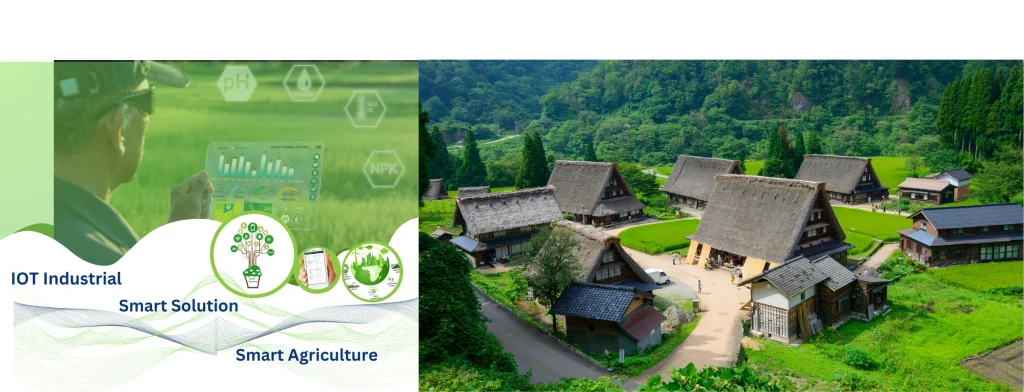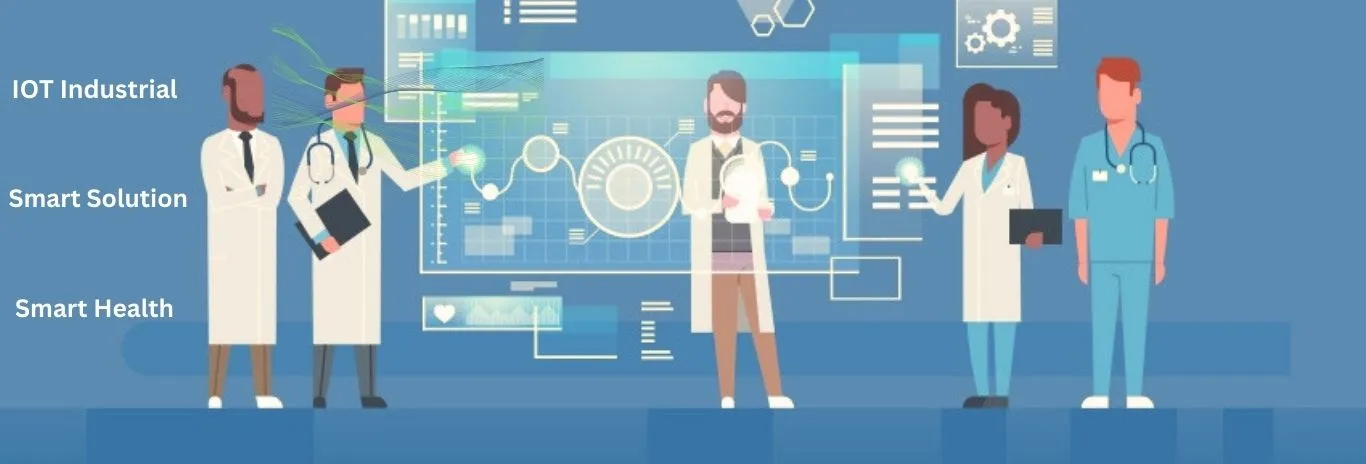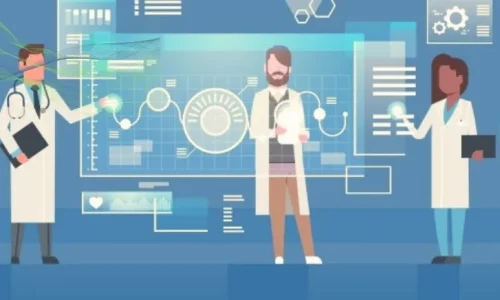- spt
- 0 Comments
- 304 Views

Smart Agriculture refers to the usage of technologies like Internet of Things, sensors, location systems, robots and artificial intelligence on your farm. The ultimate goal is increasing the quality and quantity of the crops while optimizing the human labor used.
Opportunities for more precise cultivation can increase yields and profits and reduce the use of valuable water and fertilizers According to the FAO’s forecast that 20 million people are living on this planet, agriculture faces enormous challenges: food production must increase by 70% and yet must be achieved with limited availability of arable land, rising saltwater requirements and other less predictable factors, such as the impact of climate change, among other things as well as the life cycle of plants and animals. We can solve many of these problems very easily through the smart farming system.
- The Smart Farming System project plays a key role in determining the farmers’ early diagnosis of the crop.
- Through the Doctor’s Directory system, farmers can easily contact agricultural consultants.
- Anyone can ask any question about agriculture at any time by registering at our smart farming system web site.
Farmers will be benefited by the Agriculture Consultant or any other registered member if they have any questions by registering on the “Smart Farming System” web site to solve their problems. Anyone can get help from blogs on various issues of farming for the benefit of the farmers. With the help of the Disease Prediction Blog, farmers will be able to identify different pathogens on their own crops. Farmers can easily contact the agricultural consultants for advice on their agriculture. And students who study agriculture can register as freelancers by registering on our website. This will open a way to solve their unemployment problems.
IoT technology helps to retrieve data from the sensors such as Temperature, Humidity, Soil Moisture. All these sensor values will be accessible to the farmer through a web application. This web application helps farmers better understand the requirement of water content in the soil which will eventually help in better irrigation followed by better crop production. The web application comprises three display sections, each displaying temperature, moisture & humidity values, and a manual button has been included for scenarios when there is an abundance of water due to rainfall. In such cases, alerts will be generated and the farmer can dig a way for excess water removal. The temperature sensor values are further processed for filtering out the noise by performing the Kalman Filter technique using Processing IDE application by Arduino.
These four major components are physical structure, data acquisition, data processing, and data analytics. The physical structure is the most important factor for precision agriculture to avoid any unwanted happening. Whole system is designed in such a way which controls the sensors, actuators, and devices.
A sensor performs multiple tasks like soil sensing, temperature sensing, weather sensing, light sensing, and moisture sensing. Similarly devices perform many control functions like, node discovery, device identification and naming services etc. All these functions are performed by any device or sensor which is controlled through a micro controller. This controlling operation is performed by any remote device or a computer which is connected through the Internet.
Data Acquisition is further divided into two sub components namely: IoT data acquisition and standard data acquisition. Whereby, the IoT data acquisition component consists of seven protocols that are Message Queuing Telemetry Transport (MQTT), Web socket, Advanced Message Queuing Protocol (AMQP), Node, Constrained Application Protocol (CoAP), Data Distribution Service (DDS), and Hyper Text Transfer Protocol (HTTP). Depending on the requirements and condition more protocols can be used for the implementation of smart farming. Whereas, in the standard data acquisition ZigBee, WIFI, Long Range Wide Area Network (LoraWan), SigFox and ISOBUS protocols have been used.
Data processing consists of multiple features that are image or video processing, data loading, decision support system, and data mining. According to the system requirements any feature may be added that may work in parallel to provide other services.
Data analytics consists of two main features that are monitoring and controlling. Monitoring involves three main application in smart agriculture that are Live Stock Monitoring, Field Monitoring, and Green house Monitoring.
IoT enables farmers to monitor livestock via multiple sensors which are used to monitor different animal’s diseases like temperature, heart rate, and digestion etc . Whereas field monitoring applications intend to report different conditions of field like soil richness, temperature, humidity, gas, pressure (air pressure and water pressure), and crop disease monitoring . A smart greenhouse design eliminates the manual intervention and measures different climate parameters by intelligent IoT devices and sensors according to plants requirements .
B. Iotagricultural Relevant Technologies
A Large number of technologies are being used in IoT agricultural solutions due to which it is hard to make an explicit of all those due to which our discussion focused on several core technologies which have played a vital role to modernize the IoT agricultural services.
1) Cloud and Edge Computing
Collaboration of IoT and cloud computing in agriculture provides pervasive access to shared resources. To meet various agricultural needs upon request over network and execute operations cloud computing plays vital role. Cloud based software architecture has been proposed which process and retrieve information and agricultural tasks in a more accurate way. In the field of IoT edge computing is considered as a solution to facilitate data processing at the source of data generation which are sensors, actuators and many other embedded devices. Edge computing or fog computing are measured as the backbone of cloud computing. This technology is deployed according to the features and requirements of smart farming.
2) Big Data Analytics and Machine Learning
Big data consist of a large amount of essential which are generated by agricultural sensors. Big data analysis provides different and efficient crop monitoring methods at different stages. A good systematic review on big data analysis in agriculture has been presented. Neural networks are very famous because they provide optimal solutions at a very high speed. Intrusion detection has been realized by using advance principles and technology of neural network. On the other hand most important feature of neural network is that they provide detection module and data training . By using deep neural networks an IoT based hydroponic system has been developed .
3) Communication Networks and Protocols
IoT agricultural network consist of different kinds of long ranges and short ranges networks for communications. Several IoT networks technologies help to design a crop or field monitoring sensors and devices. Communication protocols are the backbone of IoT agricultural network system and applications . They are used to exchange all agricultural data or information over the network.
4) Robotics
Multiple Agribots have been developed for the purpose of smart farming which are minimizing the amount of farmers by increasing the speed of work through advance techniques. Agribots performs elementary functions like weedi
IoT agriculture system applied as an array of wide variety of fields such as, Precision farming, livestock monitoring, and greenhouse monitoring. Agriculture applications have been categorized into three sections: IoT agricultural applications, Smartphone based applications and sensor based applications

